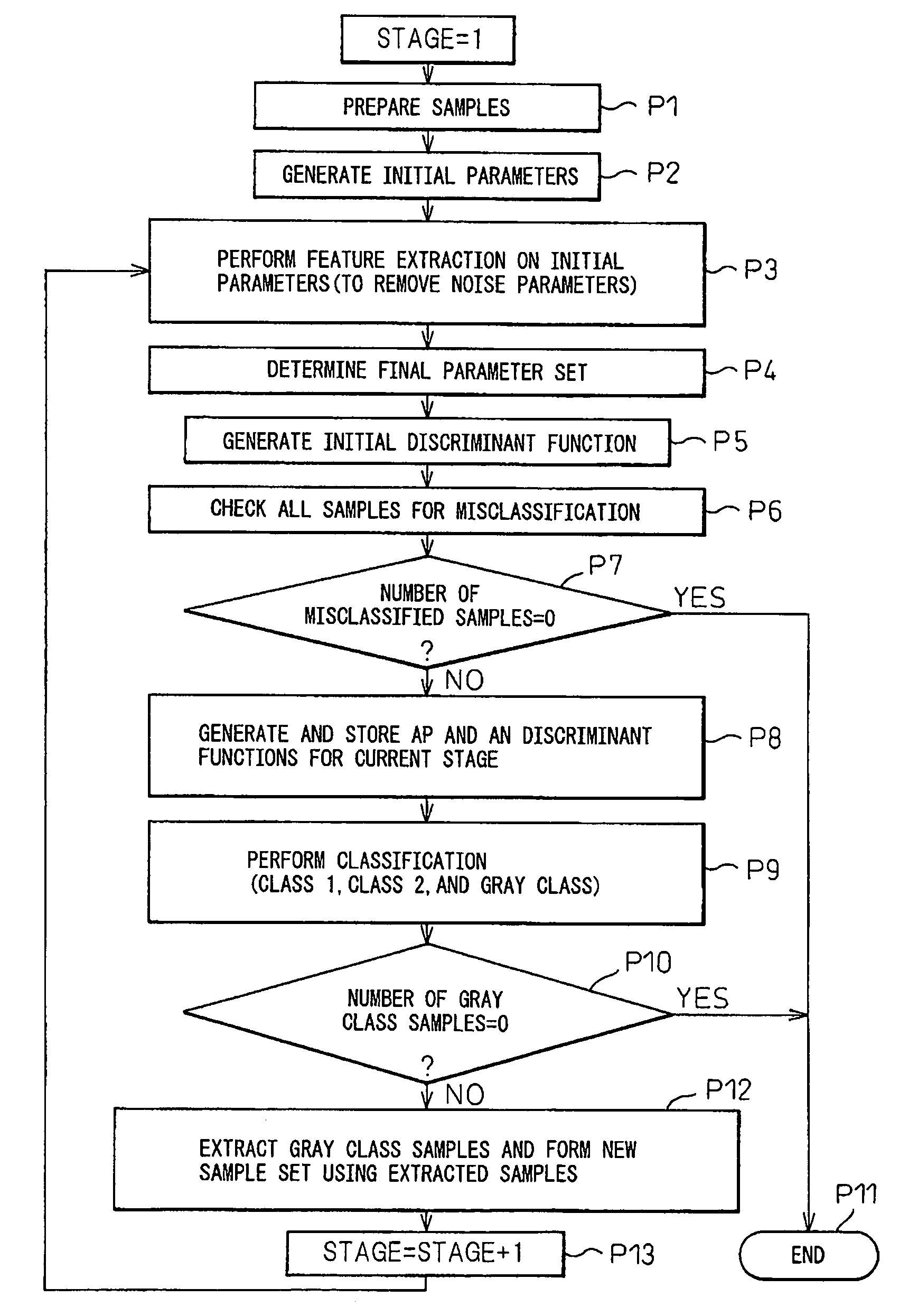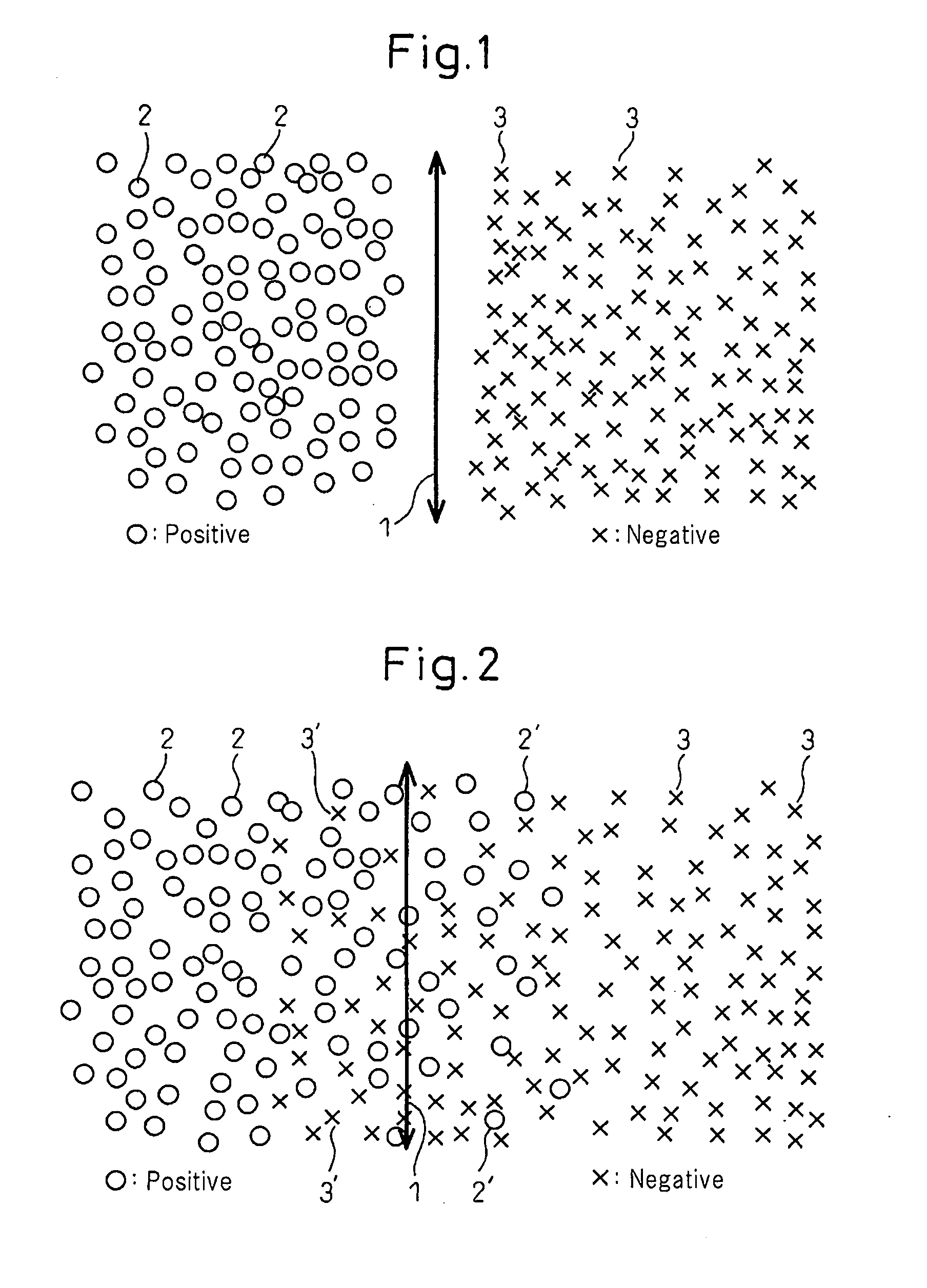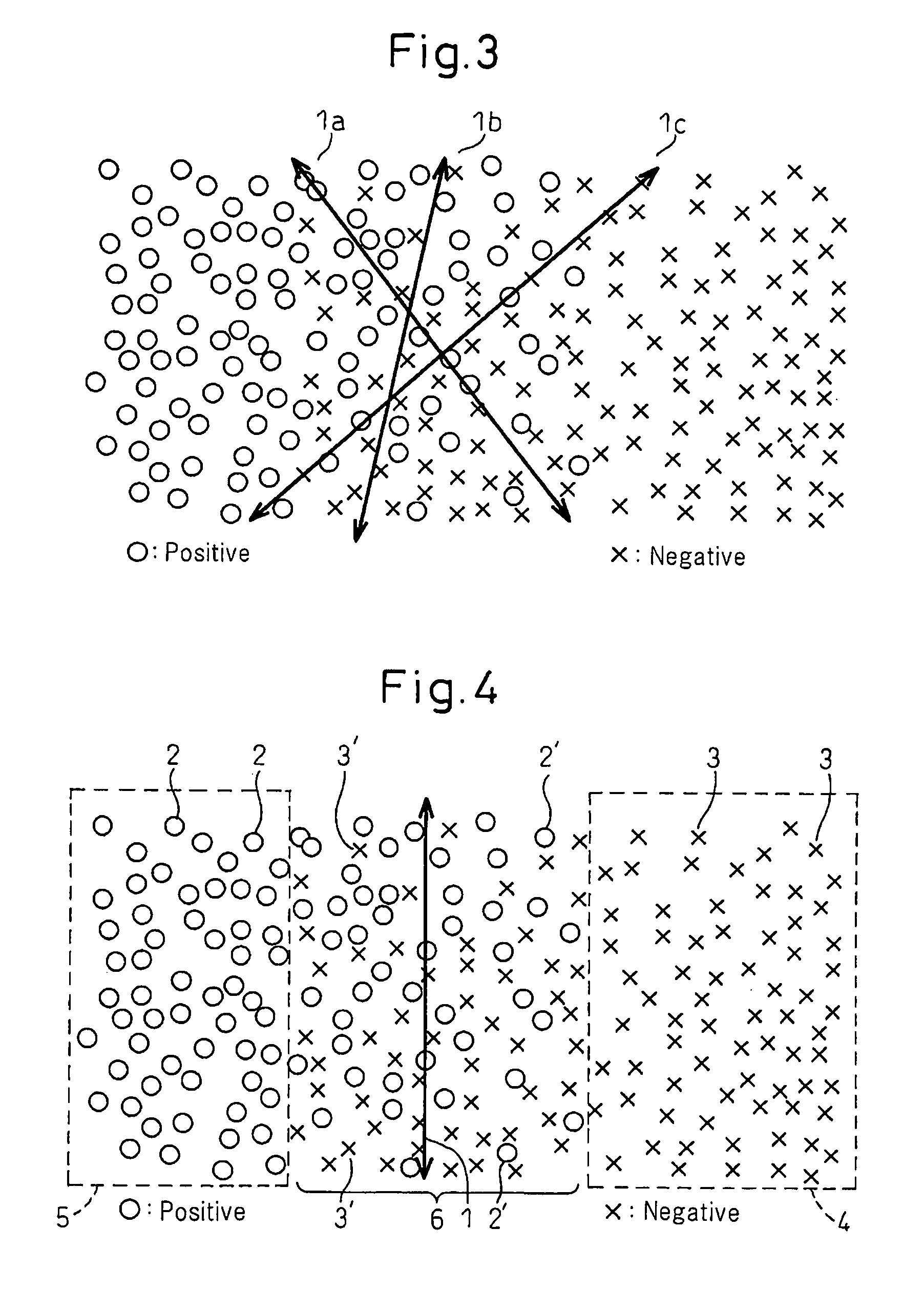Method, program and apparatus for generating two-class classification/prediction model
a classification/prediction model and program technology, applied in the field of methods, program and apparatus for generating a classification/prediction model, can solve the problems of difficult to achieve a 100% classification rate, difficult to raise the classification rate, and easy to be misclassified, so as to achieve high reliability, increase the number of samples, and the classification rate does not decrease.
- Summary
- Abstract
- Description
- Claims
- Application Information
AI Technical Summary
Benefits of technology
Problems solved by technology
Method used
Image
Examples
example
Stage 2
[0119]AN discriminant function: Linear learning machine
[0120]AP discriminant function: Linear learning machine
Stage 3
[0121]AN discriminant function: Bayes discriminant analysis
[0122]AP discriminant function: Bayes discriminant analysis
[System Configuration]
[0123]FIG. 19 is a block diagram depicting the system configuration of a two-class classification / prediction model generating apparatus according to one embodiment of the present invention. The two-class classification / prediction model generating apparatus of this embodiment includes an input device 210 for entering sample data and an output device 220 for outputting the classification results or the necessary data being processed. From the input device 200, sample information necessary for classification training is entered into an input data table 310. The input device 200 is also used to enter initial parameter set data into an initial parameter set table 320. If an analyzing unit 400 has an engine 410 for automatically ...
PUM
 Login to View More
Login to View More Abstract
Description
Claims
Application Information
 Login to View More
Login to View More - R&D
- Intellectual Property
- Life Sciences
- Materials
- Tech Scout
- Unparalleled Data Quality
- Higher Quality Content
- 60% Fewer Hallucinations
Browse by: Latest US Patents, China's latest patents, Technical Efficacy Thesaurus, Application Domain, Technology Topic, Popular Technical Reports.
© 2025 PatSnap. All rights reserved.Legal|Privacy policy|Modern Slavery Act Transparency Statement|Sitemap|About US| Contact US: help@patsnap.com



